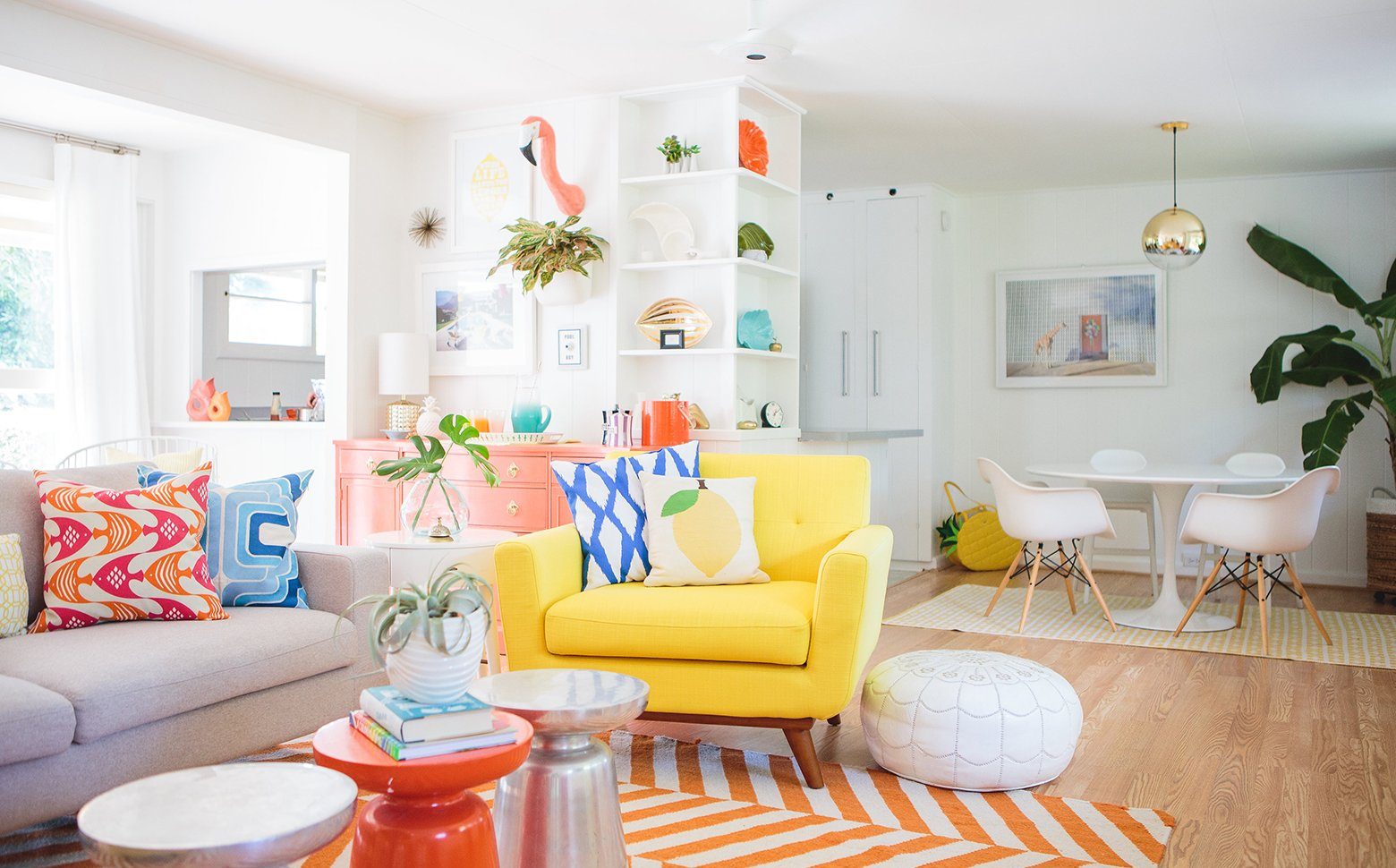Last week, we covered the power of interior design and introduced the four fundamental principles of interior design—color, balance, scale and proportion, as well as rhythm and repetition. Today, we’ll share how Havenly designer Lauren Cox thinks about color in interior design.
Each of us has an innate preference for certain colors. So naturally, our feelings about color influence how we perceive the design. Color theory is the idea that certain colors and combination of colors evoke certain emotions. For example, warm colors—reds, oranges, yellows—bring excitement and energy to a room. They are great for communal spaces and home offices. Cool colors—blues, greens, purples—are soothing, making them great for bedrooms or powder rooms.
When deciding on a color palette, start by thinking in terms of the mood you want to create. Then, choose a dominant color to base your palette on. To add visual interest, incorporate complementary colors, those opposite on the color wheel. Selecting complementary colors can be somewhat challenging because too much variation can be disruptive. However, when you get it right, your room will feel balanced and fresh.
The absence of color can be just as pleasing to the eye and is fairly easy to accomplish. Think monochromatic or neutral schemes. These color palettes are timeless and work well in any space because they provide a lot of flexibility. They can achieve either a light and airy vibe or one that’s dark and moody.
You can identify your color palette alongside your personal design style because color palettes inform personal style and vice versa.
Preppy Coastals
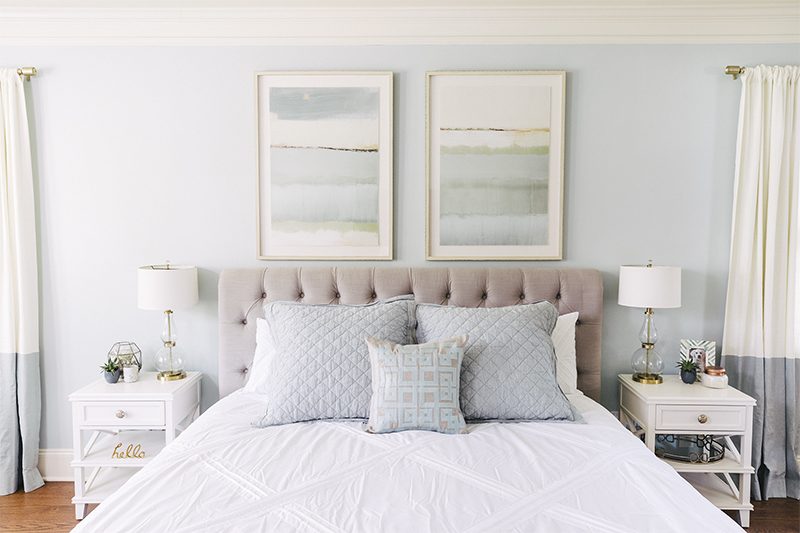
Preppy coastals incorporates gray-blues and mint greens on a canvas of creamy white, much like what you find on the coastline. It might also feature a subtle blush or salmon tone.
California Casual
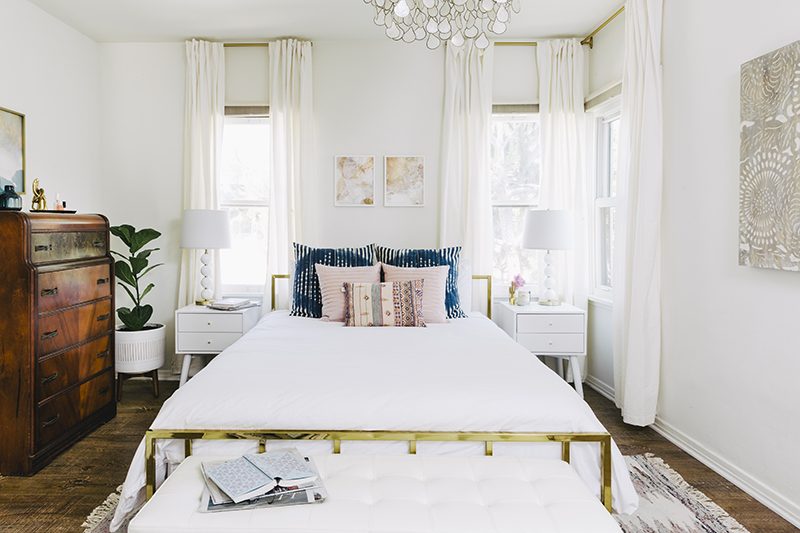
Similar to preppy coastals, light colors are the basis of California Casual. Complementary colors tend to be natural greens, cognacs, and blue
Jewel Tones
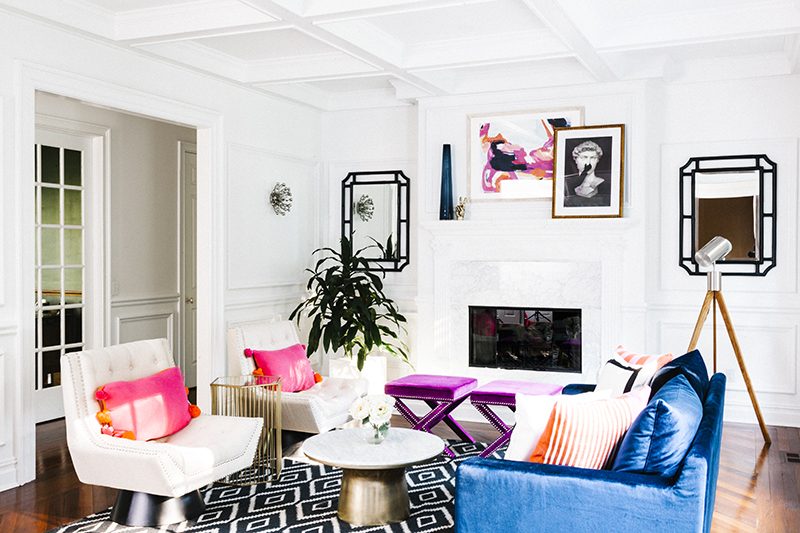
Full of rich, saturated colors like emerald green, royal blue, fuschia, and golden yellow.
Bohemian Femme
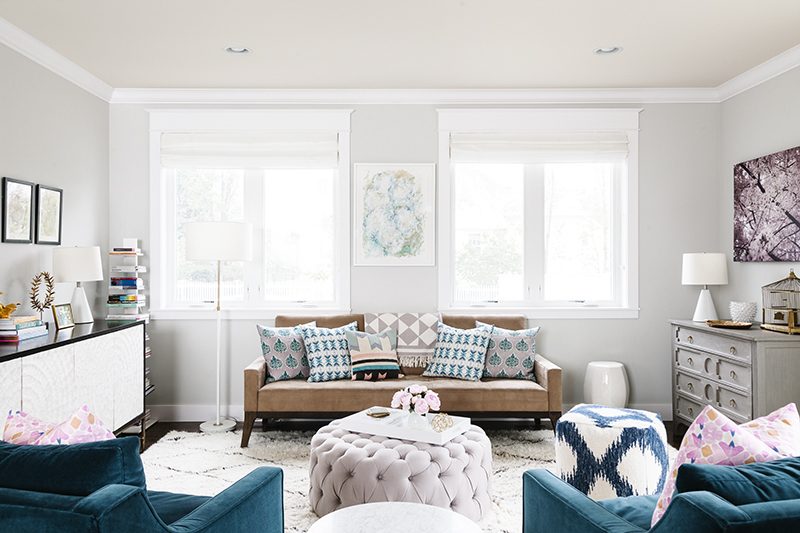
Bohemian uses lots of colors in muted shades that are balanced with warm neutrals.
Lauren Cox shared the following tips for making a space feel unique and personalized.
1. Accent Colors
Accent colors creates an element of interest and can be used to highlight your personality. There are two easy ways to choose a good pop of color: use colors that are next to each other on the color wheel or opposite from each other. Decor items, vases, and artwork are great items for adding pops of color because they are easy to swap out when you’re in need of a room refresh.
2. Statement Pieces
While they’re definitely more of a commitment than small accessories, statement pieces are bold and immediately catch your attention. If you are tight on space and don’t have room for small accessories, statement pieces are a great way to express color while maintaining function. Perhaps your space needs a purple sofa or an accent wall?
3. Trends:
Keeping up with color trends is a great tool to gain inspiration. But it’s important to remember that trends eventually end, so only buy into a trend if you truly love it–that way, it won’t ever feel like a trend to you. If you’re not sure about a trend, it’s probably safe to leave it on Pinterest or Instagram.
Identify the colors you like and don’t like. If this feels difficult, look at the colors you wear. This is an indication of the colors you’re naturally drawn to and feel comfortable in. Choose one color to build the rest of the palette around. Your foundation should be a color you love and won’t get tired of. It should allow you the flexibility to interject new colors with changing seasons or design trends.
Here are a couple other questions to consider to get you started on building the perfect color palette:
- Do you want color to be the same throughout your home?
- Are you drawn to bold, bright colors, or do you feel more at-ease in spaces decorated in neutral colors?
- Do you often want to shake up your home design or is your to design a space once and move on?
Want to learn more about using color in interior design? Lauren covers it in depth in her free Skillshare class.

